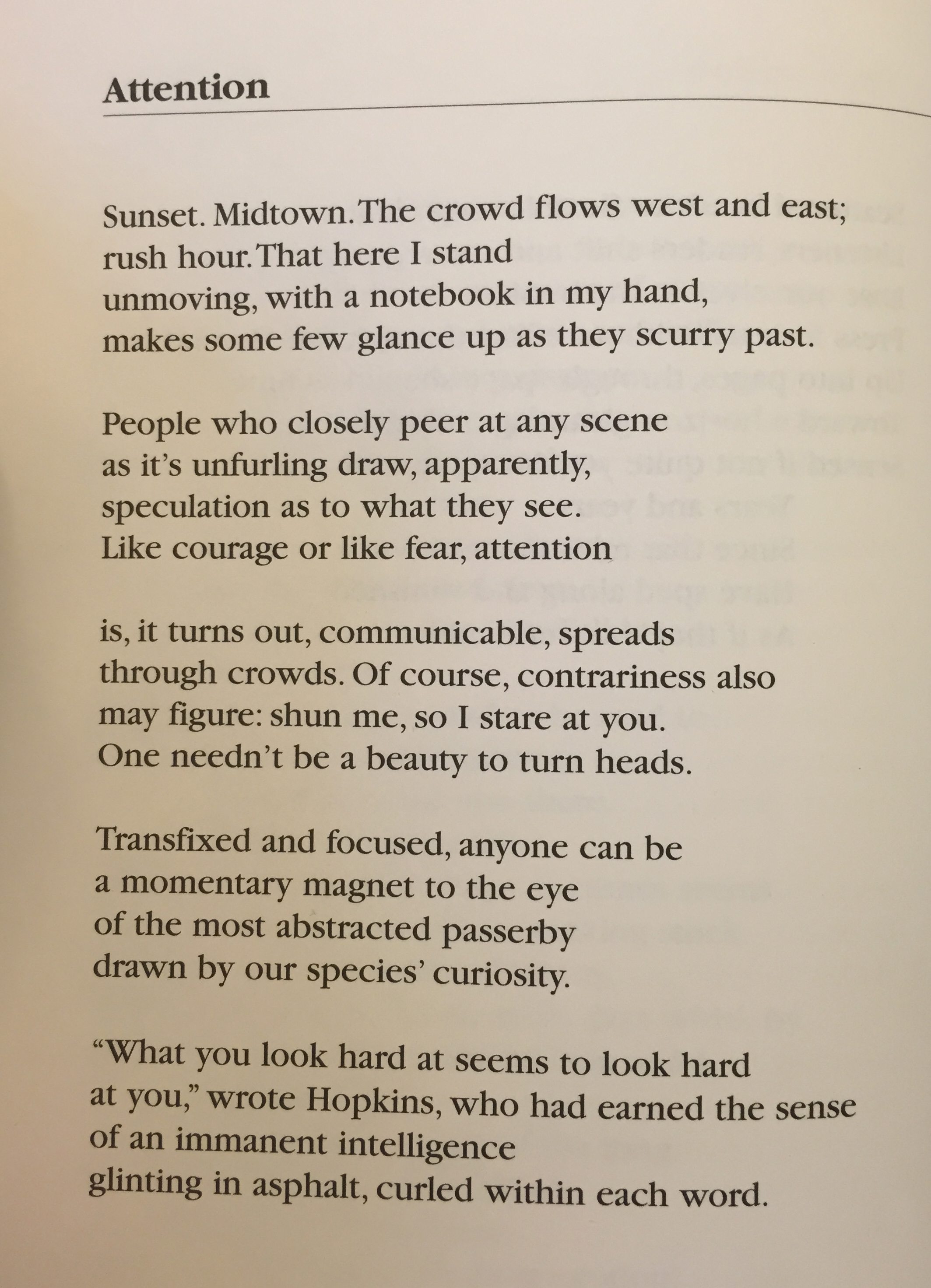An ESTAR(SER) researcher based in New York recently submitted the following query, which follows up on the recent series about the “renaissance” of the Prosphorion in the United States:
“Perusing a recent collection by the poet Rachel Hadas, I came across ‘Attention,’ originally published in Per Contra in the Spring of 2007 (I enclose a copy). Even a superficial reading places firmly in evidence Hadas’s debt to the Practice of the Birds, and the poem would seem to be an affecting evocation of a specific (outdoor) Action in Midtown Manhattan. I thought the work captured something of my own experience working with a group with Villareal’s work entitled Volume at 1133 Sixth Avenue (the Durst building) many years ago — the notion that “attention is…communicable, spreads through crowds” beautifully specifies something many of us have, I think, discovered in a very visceral way in the course of Actions (particularly those outdoors, in public spaces, where the “punctum” of a volée can draw a crowd merely on the strength of the vectoring attention of the phalanx). All that seems relatively transparent in the poem. Less obvious, perhaps (and the reason for my sending along this note), is the gesture, in the final stanza, toward the ‘reciprocity of the gaze’ (here indexed by the Hopkins quote) — which I read as strongly suggesting the dynamic of Veillance (the remarkable final phase of the Prosphorion). Those familiar with this Protocol will recall the phrasing: ‘There is no such thing as absence. See: The Absent Thing attends to you.’ For those who have attended on a Representative for thirty minutes or an hour, there is indeed something uncanny in that sense which can emerge, in the final phase, that the object is indeed ‘staring back.’ If indeed Hadas’s Attention references not merely an ordinary Action, but a Prosphorion, it would be, I think, the earliest instance of a Prosphorion of which I am aware in the New York City area. (Though I have heard of earlier instances on the West Coast of the United States). Insights from those with further knowledge on these matters would be very welcome.”

